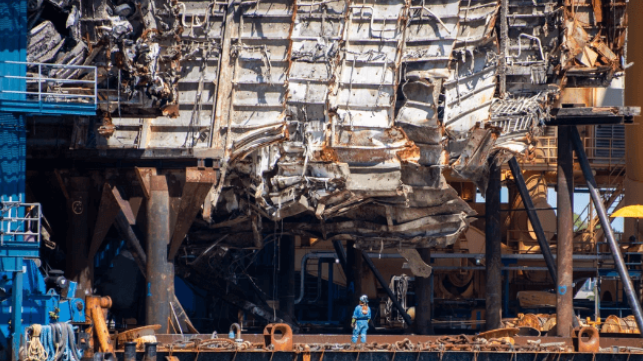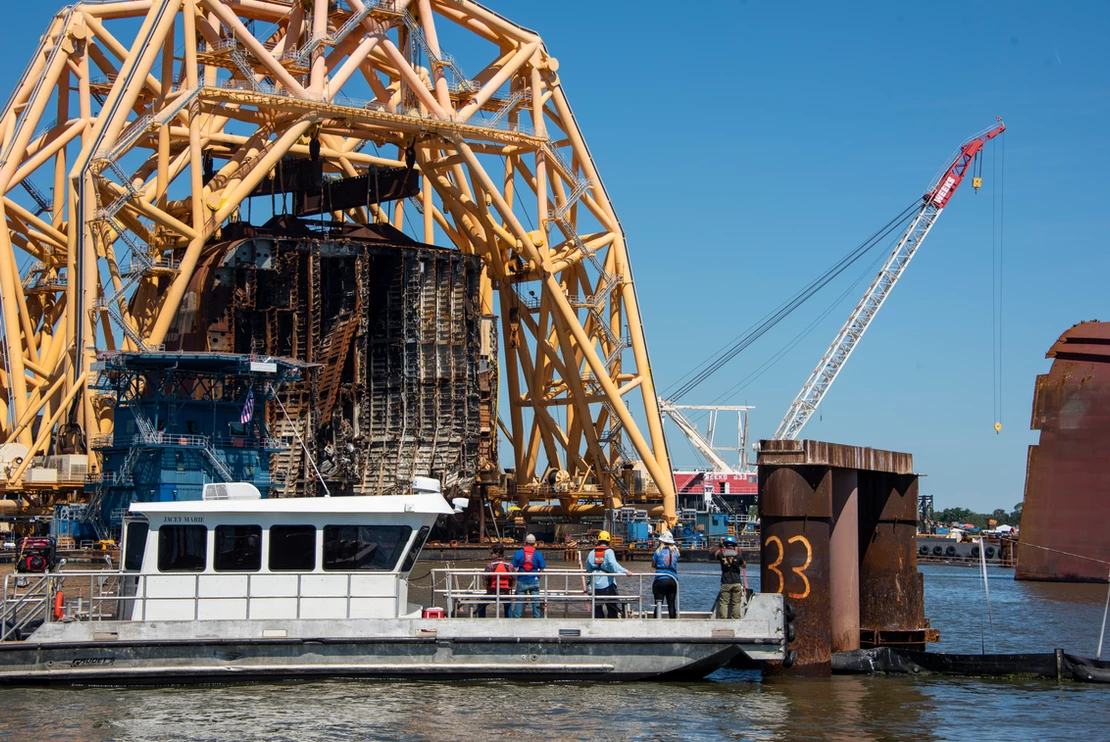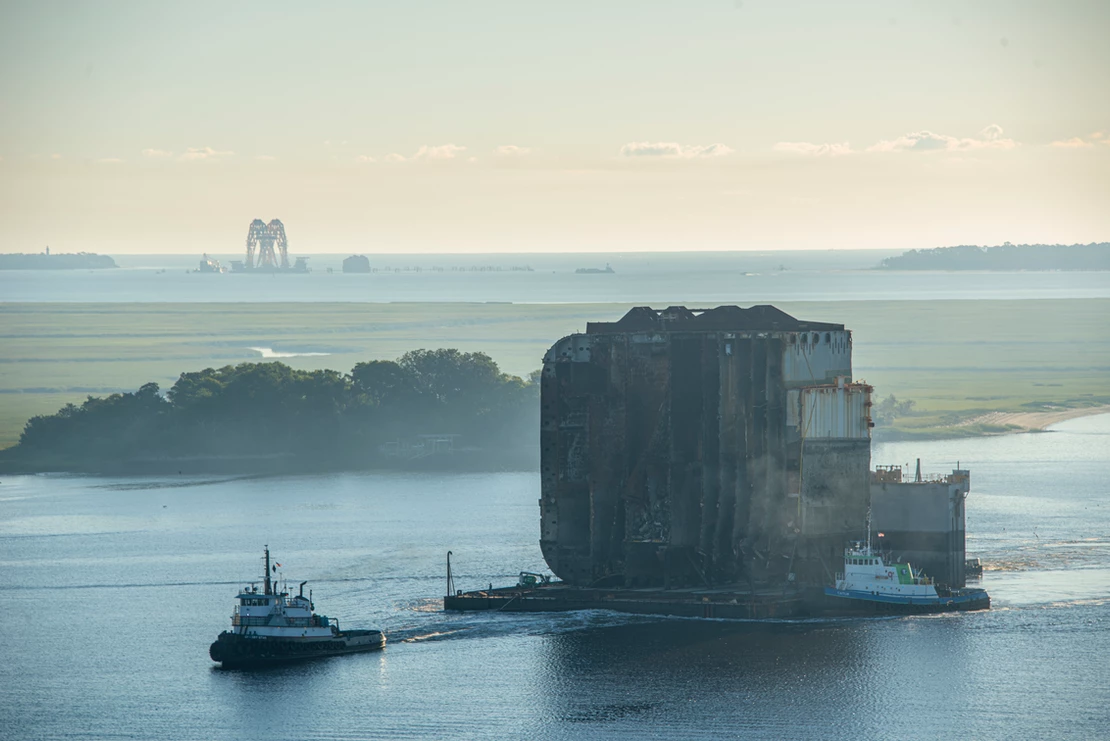Golden Ray Salvage Edges Closer to an End With Second-to-Last Hoist

On Sunday, salvors lifted and removed the second-to-last segment of the wrecked ro/ro Golden Ray from St. Simons Sound, Georgia. Just one section remains before the end of the giant wreck removal project, which is on track to become one of the most expensive projects of its kind in the industry's history.
The section lifted Sunday was damaged during the vessel's grounding in 2019, and salvors decided to modify the barge system for carriage before loadout. Special holding cradles were transferred onto a dry dock barge and modified to fit the contours of the damaged hull. The extra changes added about two weeks to the timeline but provided added certainty and safety for the removal process.
Video of the transfer shows extensive damage to the hull plating and structure on the section's port (bottom-facing) side. When Golden Ray capsized, the port side became the new "bottom" of the hull, and it contacted the seabed while the vessel was grinding to a stop.
“We are very proud of the tremendous effort to maintain safety by each member of the response team throughout the entire operation to lift and remove Section Five of the wreck,” said U.S. Coast Guard Cmdr. Efren Lopez, federal on-scene coordinator. “Even with the end of the wreck removal phase of this response in sight, we continue to prudently execute our safety, environmental protection and port function priorities.”

 Courtesy St. Simons Sound Incident Response
Courtesy St. Simons Sound Incident Response

that matters most
Get the latest maritime news delivered to your inbox daily.
The Golden Ray went aground and partially capsized in Georgia's St. Simons Sound in September 2019. During an outbound transit in calm conditions, a routine turn to starboard turned into an uncontrolled runaway maneuver, ending with the vessel aground and resting on her side.
Lt. Ian Oviatt, a staff engineer at the Coast Guard Marine Safety Center, told the NTSB that the vessel had taken on too little ballast for her cargo load. “The cause of the vessel capsizing was lack of righting energy due to the way the vessel was loaded,” Oviatt testified before an NTSB panel last September. “The vessel could have taken on additional ballast to be in compliance.” The NTSB's final report on the casualty reflected a similar conclusion.
